Thanks for the link and details. I'm liking the idea of scheduling the pump with the intellicenter schedule and not buying the intelliPH controller. What I have not sorted out is how to keep the pump from dispensing acid while the IC60 is generating chlorine. It looks like your application is for winter months when the SWCG is inactive.
That's correct. I didn't have to solve for that, and why I still want to use my IpH controller during the rest of the seasons.
The work-around is to use scheduling. The EasyTouch only allows eight schedules, and I really like the way the IpH dispenses every hour. I contend (pretend?) that it makes for a more stable pH, because it's being corrected hourly, instead of daily, or weekly like some people do. I digress. I don't have the scheduling slots to simulate that, so in the winter I only dispense once a day. Actually, only a few times a week. The pH just doesn't fluctuate as much in the winter, so I'm not really missing the hourly dispensing in that season.
WIth the IntelliCenter, maybe you have more options.
The simplest would be to schedule the acid to dispense once a day, right when the pump starts up (or maybe a minute after is better). The IntelliChlor takes about five minutes to run through its startup process, so it wouldn't be dispensing chlorine during that brief period.
The more complicated way, if I'm assuming correctly that you don't have a spa:
Set up the IntelliCenter like you have a spa. Then go into the IntelliChlor settings and set the IntelliChlor output for "Pool" to the desired output, then set the "Spa" output to zero.
Then schedule the "Spa" to come on as many times a day as you like (or as many as the IntelliCenter supports). Run the "Spa" for, I dunno, maybe 10 minutes at a time. Then schedule the IpH pump to dispense within that 10 minutes. You'll likely only need a minute or two, depending on how much acid you need.
This MO will closely simulate what the IpH controller is actually doing. When your system starts up, the IntelliChlor will too, and happily dispense its chlorine. Then, when the "Spa" turns on, the IntelliCenter will set the IntelliChlor to zero output, and the IpH pump will dispense (this is exactly what the IpH controller does). A few minutes later, well after the IpH pump is done, the IntelliCenter will switch back to "Pool" mode, the IntelliChlor will be set back to the normal output, and BoB's-Yer-Uncle. Because you don't actually have a spa, the pool and the plumbing won't know the difference. No actuator valves will turn during "Spa" mode, so the pump will just keep running water through the filter and the returns as it always does.
You'll have to deal with the water feature somehow. You wouldn't want acid flying through the air or running down a water fall. It'll be greatly diluted, of course, but just not a good idea. So you'd have to schedule the dispensing around when you want to use the water feature. You could even wire the IpH pump such that the pump couldn't dispense while the water feature was on, as a safeguard.
If you like the idea of dispensing more often, to maintain your pH nice and even, and find that the one-minute minimum pumping the IntelliCenter allows is putting too much acid into your pool, you'd address that by either reducing the dispensing schedule, or diluting the acid in the IpH tank even more, until you find the right combo. Diluting acid in the tank will mean you'll have to fill it more often, but on the plus side, the more dilute the mixture the less wear-and-tear the acid will do on all the components (the IpH pump, the tubing, the injector, etc).
And there's another important safeguard to diluting the acid. If everything works as it should then great, but should the IntelliCenter go kafloey, or someone somehow triggers the acid pumping circuit, it's possible the pump could empty the entire contents of the tank into the pool all in one shot. The less acid in the tank, the less dangerous this would be. I never have more than a gallon of 31% in my tank (two gallons after dilution). If my system pumped it out somehow, that means the most my pool would get is a gallon of acid. Which will tank my pH for a time, but not cause any real harm to pool or people. And my system only runs sans-controller in the winter, when no one is in the pool anyway. During swim season, the IpH controller is safeguarding the total amount dispensed at any one time. Just something to think through and decide for yourself how "safe" you want to make your system.
So there's a few ways to skin this cat.
You might have noted that I also recreated the flow switch safeguard in my setup, when the IntelliChlor is offline. I would recommend you do the same. I can help you with the wiring circuitry if you need. What you don't want is the IntelliCenter accidentally dispensing a glob of acid into your plumbing when the pump is not running. The only way to do that reliably is with a physical flow switch. Wiring and scheduling are the primary safeguards, but personally, I wouldn't trust those alone (and don't, as per my wiring hack).
Let me know if I can help...
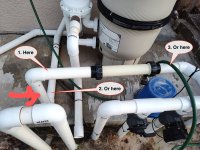
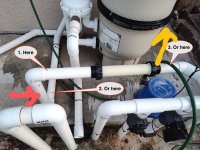
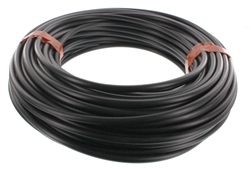
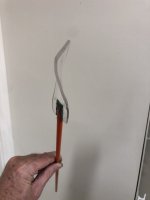
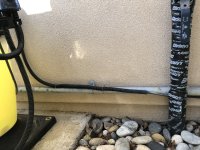
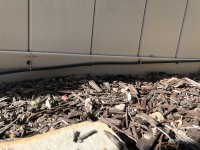
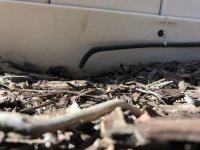
www.troublefreepool.com

